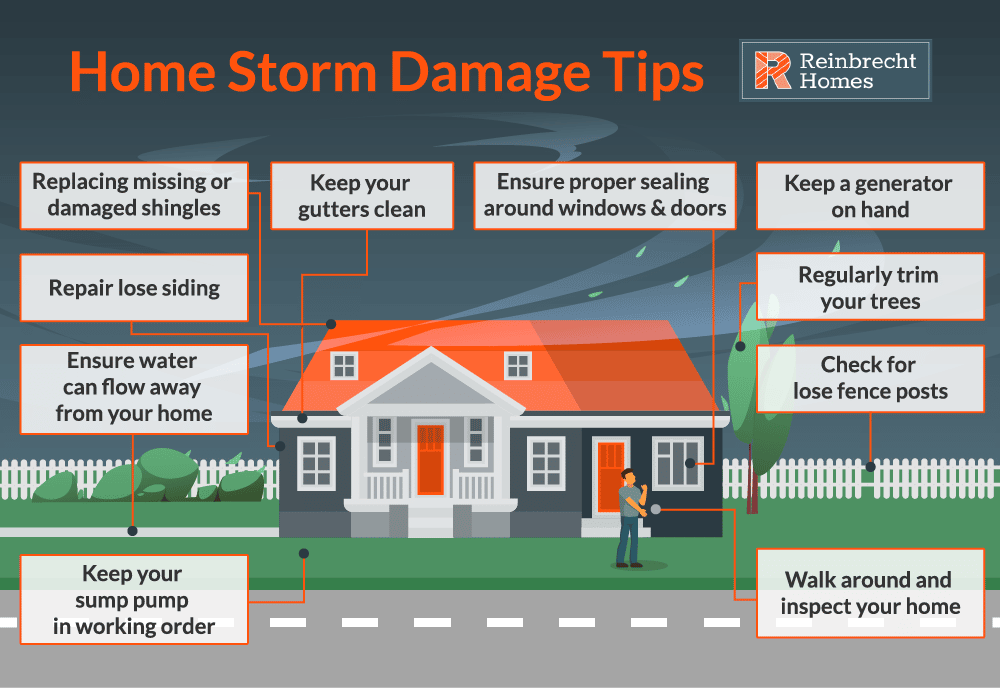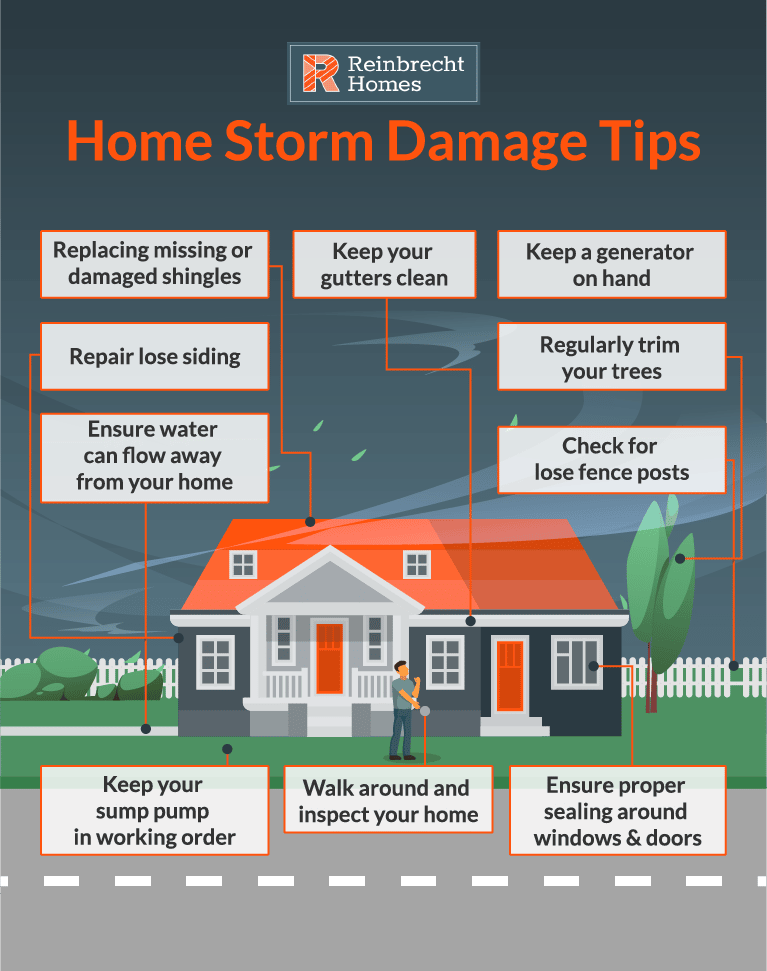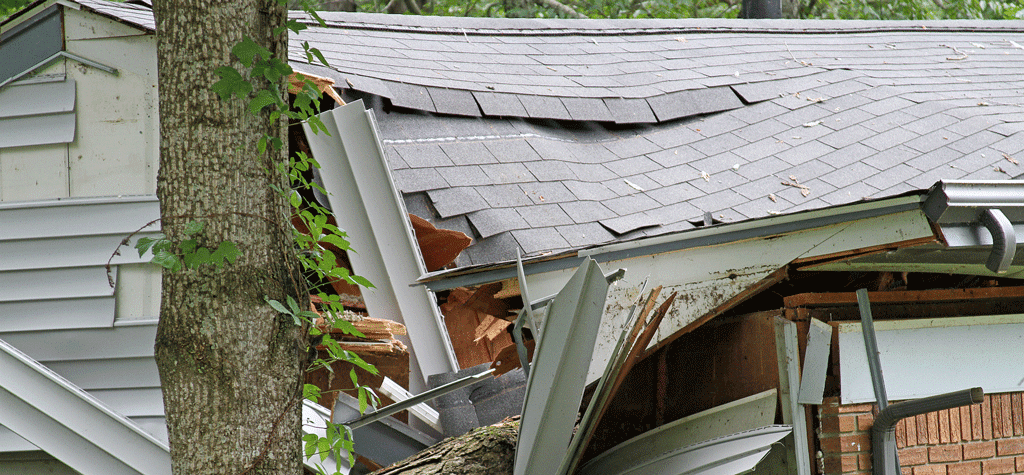Every spring, we here in the Midwest prep for storm season.
Year-to-year, the severity and frequency of bad weather is anyone’s guess. But, inevitably, a lot of homeowners end up dealing with property damage as a result of storms.
The most common type of property damage we see is roof and siding damage following heavy winds and/or hail.
And while you can’t control the weather, there’s still a lot you can do to protect your home and your family. Additionally, most of what we’ll discuss in this article will also help protect your neighbors’ homes and property!
Bonus points.
So, what are some quick and easy precautions you can take to minimize property damage and expenses during storm season?
When it Comes to Storm Damage, Basic Upkeep Goes A Long Way


1. Replace Missing or Damaged Shingles
If a shingle is damaged, it’s more likely to break free. If it’s missing, well then you’ve got a gap for wind to get under and do even more damage.
Note that when you’re installing or replacing shingles, they must be nailed properly — NOT above the nail line.
In terms of how roofing materials – shingles vs. metal – hold up to hail, it doesn’t really matter. After a hailstorm, our crews will end up replacing just as many shingle roofs as metal ones.
2. Repair Loose Siding
The same rules as roofing apply to siding: it’s important to ensure your siding isn’t damaged.
3. Keep Your Gutters Clear
Make sure your gutters are free-flowing and your downspouts flow away from your foundation.
Water damage or flooding is one of the quickest ways to devalue your home. So ensuring your gutters are clear is the first line of defense in helping water to flow away from your home. Which leads to another important preventative measure …
4. Ensure Water can Flow Away from Your Home
The grade of your lot should keep water flowing away from your home and into a ditch, drain, or some other proper retention area.
5. Keep Your Sump Pump in Working Order
Before Spring rains start up, we suggest checking whether your sump pump is in working order. If you want to feel extra-secure, having a backup sump pump is a sure-fire way to prevent basement flooding.
6. Ensure Proper Sealing of Doors and Windows
Wind only needs a small opening to get underneath something like a shingle or siding and rip it off. And in the event of tornadic winds, a small opening in your windows or doors could enlarge (read: break) and allow enough wind inside to compromise your home’s roof.
7. Check for Loose Fence Posts
Wind will surprise you. Anything that’s not nailed down is a liability, and that includes fence posts, which are often forgotten or ignored in homeowner’s storm-prep.
Checking your fence’s footing is as easy as giving each post a strong shake to check for loose ones.
8. Regularly Trim Your Trees
Problem tree limbs can damage your home, a vehicle, or even your neighbor’s property. Regularly trimming the trees on your property is an excellent way to protect your roof and windows.
9. Walk Around Your Property
A lot of people don’t have the time or skills to check and/or repair everything on their property before storm season kicks up. But, if you know a storm is coming, there are some very basic steps you can take to minimize its impact.
Like identifying the items around your property that could become projectiles. That means lawn furniture, tools, flower pots, or other yard debris. Do yourself a favor and move those items to a garage, a shed, or indoors.
10. Keep a Generator On Hand
A bad storm could potentially knock out power to your home for a couple of hours — or days. Having a generator on standby could go a long way towards ensuring you don’t lose your food, or the livability of your home until power is restored.
Most Importantly
Don’t forget to protect people.
Your home and the things inside are replaceable. Your family isn’t.
Have a storm safety plan in place, including a safe location to go, like a basement or storm shelter, to ride out the worst mother nature has to offer.
Every year, storm season brings a lot of uncertainty, but that doesn’t mean there’s nothing you can do about it.




